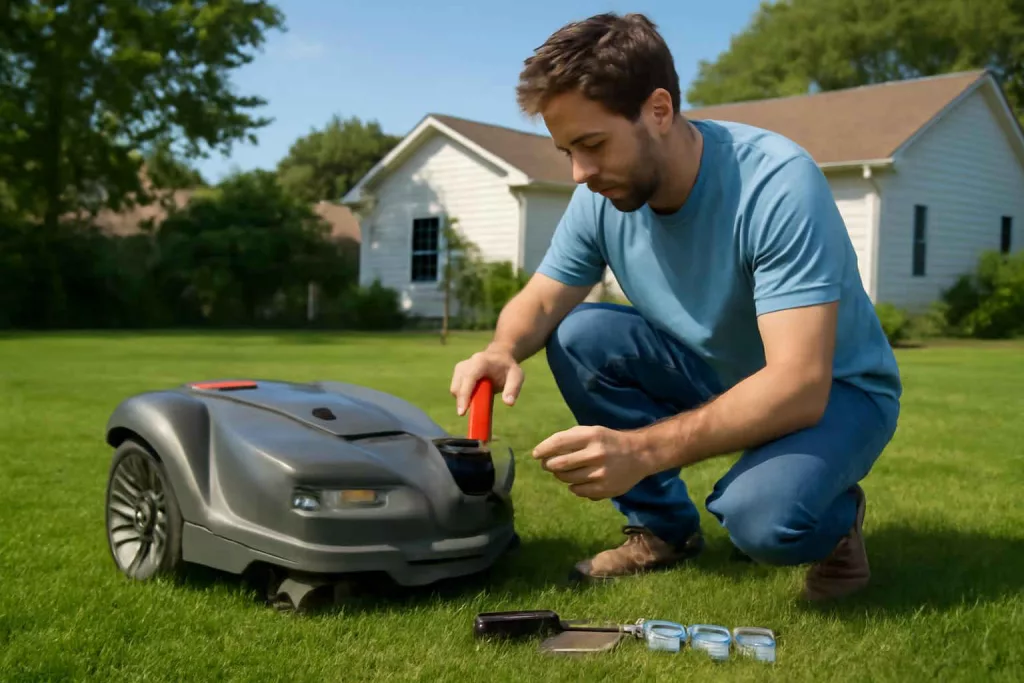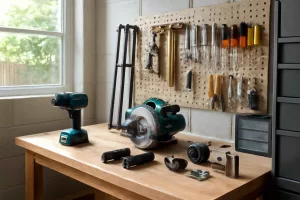Maintaining your robotic lawn mower is crucial to ensure consistent cutting performance and extend its lifespan. Regular care not only prevents unexpected breakdowns but also keeps your yard looking its best. From cleaning debris build-up under the chassis to replacing dull blades, effective robotic lawn mower maintenance practices will have your mower running smoothly all season. If you need high-quality replacement parts, consider ordering replacement blades for robotic lawn mowers to keep cuts precise and efficient.
Why Regular Maintenance Matters for Robotic Lawn Mowers
Consistent maintenance ensures your robotic lawn mower delivers optimal cutting performance, conserves battery life, and reduces the risk of mechanical failures. A well-maintained mower uses less energy and navigates your lawn more predictably, resulting in even grass height and healthier turf. Neglecting routine upkeep can lead to clogged sensors, compromised cutting blades, and diminished battery capacity, ultimately shortening the unit’s overall life.
Impact on Cutting Performance
Sharp blades and clean cutting decks allow your mower to glide smoothly across the grass, making precise, consistent cuts. Dull or damaged blades tear grass blades rather than slicing them cleanly, leading to ragged edges that brown quickly. Over time, this can stress the lawn, making it more susceptible to pests and disease. To ensure crisp cuts, inspect blade condition monthly and replace or sharpen blades as needed.
Battery Longevity
Your mower’s battery is its heart. Improper charging, exposure to extreme temperatures, and frequent deep discharges will gradually degrade battery cells. Adhering to recommended charging cycles and storing the mower in a temperature-controlled environment can significantly extend battery life. For tips on battery care that apply to various power tools, check out Extend the Life of Power Tool Batteries.
Routine Cleaning and Debris Removal
Keeping your mower free from grass clippings, dirt, and debris prevents clogs and reduces strain on mechanical parts. Aim to clean your mower after each mowing session, especially if your lawn has damp spots or thick clumps of grass. A quick brush-down minimizes residue build-up that could interfere with sensors and cutting mechanisms.
Daily vs Weekly Cleaning
After every mowing cycle, brush away loose grass clippings around the wheels, cutting deck, and sensors. Use a handheld brush or blower to dislodge debris from tight spots. Once a week, perform a deeper cleaning: remove the deck cover if possible, clear any hidden clumps, and wipe down sensor areas with a damp cloth. For more efficient debris removal, you might invest in a quality portable air compressor to blow out hard-to-reach areas.
Tools You Need
The right tools speed up the cleaning process and ensure thorough maintenance. Essential items include a soft-bristle brush, microfiber cloths, compressed air source or blower, and a small screwdriver for removing covers. Avoid using high-pressure washers, which can force water into sensitive electronics and void warranties.
Blade Inspection and Replacement
Blades wear down over time and should be checked at least once a month, or more frequently if you mow rough terrain. Dull blades compromise the mower’s ability to trim grass cleanly, leading to uneven patches and unnecessary strain on the motor.
How to Check Blade Sharpness
Remove the blade according to the manufacturer’s instructions, then visually inspect for nicks, bends, or missing segments. Run a finger carefully along the blade edge to feel for smoothness. Excessively rough or rounded edges indicate it’s time for replacement or professional sharpening. Avoid attempting to sharpen blades with household tools; rotary tool sharpening requires skill and balance.
Steps to Replace Blades
Always disconnect power before servicing blades. Use the correct size wrench to loosen mounting bolts, remove the old blade, and fit the new one—ensuring the cutting edge faces the right direction. Tighten bolts to the manufacturer’s torque specification. If you prefer a guided approach, consult a detailed guide like how to rebuild lawn mower carburetor, which covers similar precision steps for outdoor equipment.
Battery Care and Charging Best Practices
The battery powers both the drive system and cutting motors of your robotic mower. Proper battery maintenance maximizes run times and minimizes degradation over years of use.
Optimal Charging Cycles
Follow manufacturer recommendations for charging limits—usually between 20% and 80% state of charge for lithium batteries. Avoid fully depleting the battery or leaving it at 100% for extended periods. Most robotic mowers manage charging automatically, but if your model allows manual charging, invest in a smart charger that prevents overcharging.
Winter Storage Tips
Before storing your mower for winter, charge it to around 50% and remove the battery if the model permits. Store the battery in a cool, dry place away from direct sunlight. For additional winter prep info on outdoor equipment, see our guide on how to winterize a gas pressure washer.
Weatherproofing and Seasonal Storage
Outdoor exposure to rain, UV rays, and fluctuating temperatures can degrade your robotic mower’s components. Proper weatherproofing and seasonal storage practices help maintain reliability.
Preparing Your Mower for Winter
Clean the mower thoroughly, remove and store the battery separately, and apply a light coat of rust inhibitor on metal parts. If possible, park the unit in a shed or garage to shield it from snow and ice. Covering the charging station with a waterproof shield will also prevent moisture damage.
Spring Startup Checklist
Once temperatures consistently exceed 50°F, reinstall the battery, inspect all electronic connections, and clear any spider webs or nests around wheels and sensors. Test the boundary wire for damage and perform a test run in your yard to confirm optimal cutting height and navigation.
Troubleshooting Common Issues
Even with top maintenance, problems can arise. Familiarizing yourself with common error codes and simple fixes saves time and prevents costly repairs.
Connection and Signal Problems
Most robotic mowers rely on perimeter wires or wireless signals to define mowing zones. If the mower veers off course or stops unexpectedly, check for wire breaks or signal interference from nearby electronics. Use your mower’s diagnostic mode to pinpoint faulty connections.
Error Codes and Resolutions
Consult the user manual for error code definitions. Common alerts include blade jams, low battery warnings, and sensor obstructions. Clearing debris around the cutting deck and ensuring proper blade installation usually resolves most errors.
Safety Precautions for Robotic Mower Maintenance
Your safety should always come first when servicing robotic equipment. Even when the mower is off, residual energy in capacitors or batteries can pose a risk.
Disconnect Power Completely
Before opening any panel or handling blade assemblies, remove the battery pack and ensure the unit cannot start unexpectedly. Use insulated tools when working near electrical components and wear protective gloves to avoid cuts.
Work on a Stable Surface
Place the mower on a flat, level bench or stand to prevent tipping. Secure the deck cover properly after cleaning to avoid loose parts that could cause injury when the mower restarts.
Professional Servicing vs DIY Maintenance
While most routine tasks can be handled at home, certain repairs require professional expertise. Understanding your limits ensures your mower receives the best care without unnecessary costs.
When to DIY
Routine cleaning, blade inspections, and minor electrical checks fall within the scope of most DIY enthusiasts. If you feel comfortable following step-by-step instructions and your mower’s warranty allows self-servicing, handling these tasks yourself is cost-effective.
When to Seek Professional Help
Complex issues such as motherboard failures, motor replacements, or advanced diagnostics should be performed by authorized service centers. Professional technicians have specialized tools and replacement parts to restore your mower safely and reliably.
By following these comprehensive robotic lawn mower maintenance tips—covering cleaning, blade care, battery management, and more—you’ll enjoy hassle-free operation and healthier grass all year long. Ready to upgrade your workshop or garage tools? Explore our workshop setup and tool storage page for organization solutions that complement your outdoor maintenance routine.






